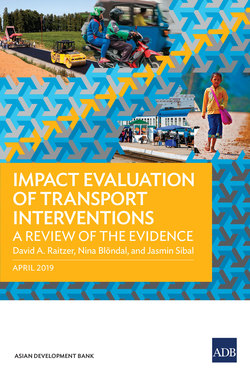Читать книгу Impact Evaluation of Transport Interventions - David A. Raitzer - Страница 7
1. Importance of Impact Evaluation for the Transport Sector
ОглавлениеThe existing body of research on the causal effect of transport sector interventions is limited, but growing. To date, the effects of transport sector projects have mostly been modeled using mechanistic and/or unverified assumptions about how people and markets behave (ADB 2013a, Lacono and Levinson 2008). For example, project economic analysis typically uses baseline traffic counts and engineering specification of road improvements to mechanically project changes in travel speeds, costs, and time savings, without considering how drivers actually behave, or how external trends condition effects. Broader economic modeling, such as the use of computable general equilibrium models, is usually rooted in strong assumptions that markets operate in a perfectly competitive manner without frictions or transaction costs, under assumed elasticities of substitution, and often with assumed shocks from interventions.
Impact evaluation, on the other hand, empirically measures the causal effects (and the statistical significance of those effects) of an intervention (or “treatment” as termed in the impact evaluation literature) on outcomes of interest, while minimizing assumptions to the degree feasible. Rather than use assumptions to create a model, impact evaluation is an approach that can be used to test assumptions, especially concerning how behavior conditions effects. The assumptions can relate to inputs such as alternative means of contracting and maintenance, core infrastructure functionality, complementary measures, or alternative transport approaches. They can relate to outcomes such as changes in transport behavior, modal choices, congestion, travel costs, market prices, accidents, and emissions. Or they can relate to longer-term goals such as improvements to employment, income, poverty, pollution, education, and health.
Given the wide range of questions it can help to answer, impact evaluation has much potential to enhance future project design. Recent evaluations have used random assignment to explore the effect of road safety initiatives, auditing mechanisms, and transport subsidies. There is considerable scope to refine understanding of assumptions for sector programming through more rigorous estimation of treatment effects.
This report aims to help orient future impact evaluation work in the transport sector by reviewing what has been produced against what might be possible. Its intended audience includes those who have interest in evidence on “what works” in transport, either as consumers of insights, or as contributors to knowledge via future impact evaluations. To do so, this report offers a brief review of impact evaluation considerations for transport interventions, impact evaluations performed to date, and future directions for impact evaluation studies. It first characterizes transport sector interventions and theories of change to identify potential impact evaluation questions. Then it reviews methodological considerations and potential applications. In the sections that follow, 91 completed impact evaluations are reviewed in terms of interventions and outcomes covered, as well as methods applied. From these sets of information, gaps in intervention and outcome/impact coverage are identified, and future directions for impact evaluation are proposed.
